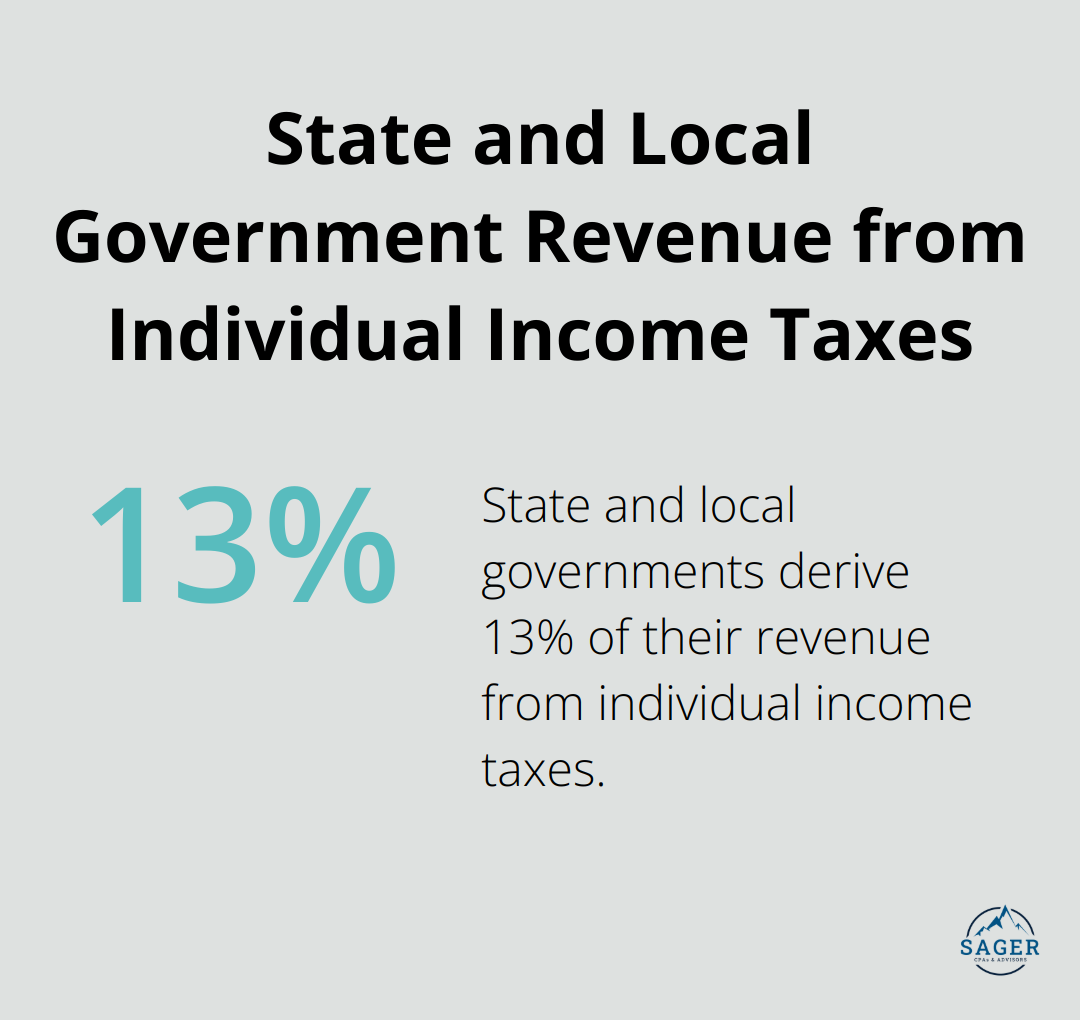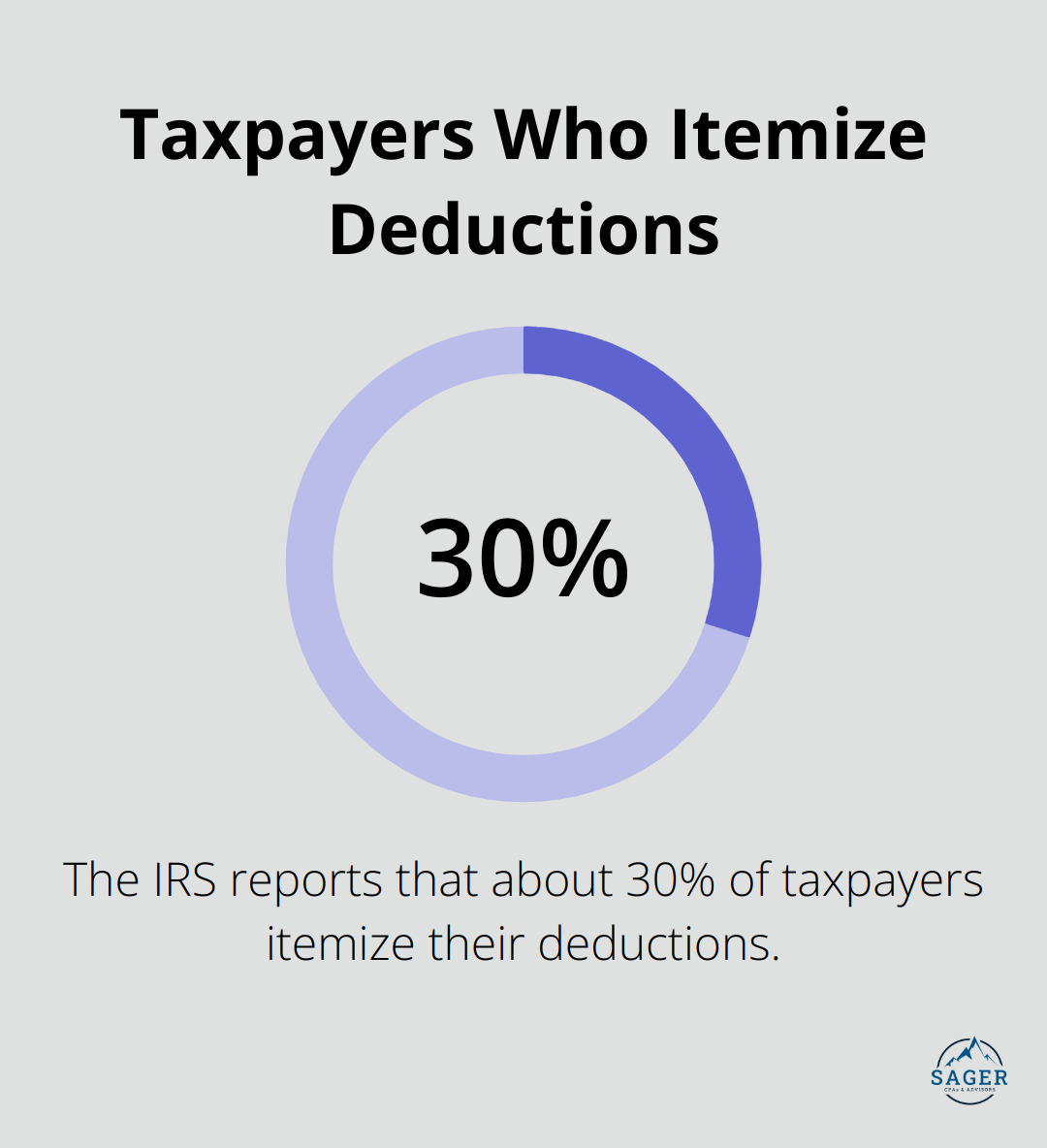
Tax mitigation strategies are a powerful tool for reducing your tax burden legally and ethically. At Sager CPA, we understand the importance of effective tax planning in maximizing your financial resources.
In this post, we’ll explore key strategies to help you minimize your tax liability while staying compliant with tax laws. We’ll also provide practical tips on implementing these strategies and highlight the benefits of working with tax professionals.
Tax mitigation is a legal approach to reduce your tax liability. It involves strategic planning and the use of legitimate methods to minimize the amount of taxes you owe. At its core, tax mitigation is about understanding the tax code and using it to your advantage.
It’s important to distinguish between tax mitigation and tax evasion. Tax mitigation is perfectly legal and involves using existing tax laws to reduce your tax burden. Tax evasion, on the other hand, is illegal and involves deliberately underpaying or not paying taxes owed. The key difference lies in transparency and compliance with tax regulations.
For example, claiming legitimate deductions for business expenses is tax mitigation. Hiding income or falsifying documents to pay less tax is tax evasion.
Engaging in legal and ethical tax planning is not just about staying on the right side of the law. It’s about building a sustainable financial future. Proper tax mitigation can lead to significant savings, allowing you to reinvest in your business or personal financial goals.
Moreover, ethical tax practices contribute to a fair tax system. When everyone pays their fair share, it ensures that public services and infrastructure can be adequately funded. State and local governments derive 13 percent of their revenue from individual income taxes.

To implement effective tax mitigation strategies, you should start by thoroughly understanding your financial situation. This includes your income sources, potential deductions, and applicable tax credits. Next, you must stay informed about changes in tax laws. The tax code is complex and ever-changing.
Working with a qualified tax professional can make a significant difference in your tax mitigation efforts. They can help you navigate complex tax situations and identify opportunities for tax savings that you might overlook on your own.
Effective tax mitigation is an ongoing process. It requires regular review and adjustment of your strategies to ensure they align with your current financial situation and the latest tax laws. A proactive approach to tax planning can significantly reduce your tax burden while maintaining compliance with all relevant regulations.
As we move forward, let’s explore some key tax mitigation strategies that can help you optimize your financial position and minimize your tax liability.
Tax mitigation requires strategic application of rules to your unique financial situation. Here are some powerful techniques to reduce your tax burden:
Lower your tax bill by maximizing your deductions. Track and document all eligible expenses throughout the year. Businesses should include office supplies, travel expenses, and professional development costs. Individuals should focus on charitable donations, mortgage interest, and state and local taxes.
The IRS reports that about 30% of taxpayers itemize their deductions. Meticulous expense recording might reveal that itemizing yields a higher deduction than the standard deduction (especially true for high-income earners or those with significant mortgage interest or charitable contributions).
The timing of income receipt or expense incurrence can substantially impact your tax liability. If you expect higher income next year, accelerate income into the current year when you’re in a lower tax bracket. If you anticipate a lower tax bracket next year, defer income to the following year for significant tax savings.
Businesses can apply the same principle to expenses. In a particularly profitable year, make large purchases or investments before year-end to offset some income. This strategy works particularly well for small businesses and self-employed individuals who control their income and expenses more directly.
Reduce your taxable income and grow your wealth by utilizing tax-advantaged accounts. Individuals should maximize contributions to retirement accounts like 401(k)s and IRAs.
Business owners should consider setting up a Simplified Employee Pension (SEP) IRA or a Solo 401(k). These accounts allow for higher contribution limits and can significantly reduce taxable income. For self-employed business owners, both plans allow contributions of up to $70,000, with a higher limit of $77,000 for those 50 and older.

Health Savings Accounts (HSAs) offer another excellent tool for tax mitigation. Contributions are tax-deductible, grow tax-free, and can be withdrawn tax-free for qualified medical expenses.
Your business structure significantly impacts your tax liability. Different structures (such as sole proprietorships, partnerships, LLCs, and corporations) have varying tax implications. Regularly review your business structure to ensure it aligns with your current financial situation and goals.
For example, an S Corporation can help self-employed individuals save on self-employment taxes. However, this structure also comes with additional administrative requirements. Consult with a tax professional to determine the most tax-efficient structure for your business.
Real estate investments offer numerous tax benefits. Depreciation deductions allow you to offset rental income, potentially reducing your overall tax liability. The 1031 exchange provision allows taxpayers holding real property for investment purposes to defer capital gains tax that would otherwise be recognized upon the sale of the property.
Additionally, if you use part of your home for business purposes, you may qualify for home office deductions. This can include a portion of your mortgage interest, property taxes, and utilities.
As we move forward, let’s explore how to effectively implement these strategies in your personal or business financial plan.
The first step to implement tax mitigation strategies requires a thorough assessment of your current tax situation. This assessment goes beyond reviewing last year’s tax return. You must analyze your income sources, deductions, credits, and potential tax liabilities for the current year and beyond.
For businesses, this means a review of revenue streams, expenses, and capital investments. For individuals, it includes an examination of income, investments, and potential life changes that could impact taxes.
A thorough assessment often reveals overlooked opportunities. When computing their federal taxes, taxpayers either claim a standard deduction or itemize deductions, and these deductions are subtracted from their income.

After you gain a clear picture of your tax situation, you should develop a comprehensive tax plan. This plan must outline specific strategies to reduce your tax liability while aligning with your financial goals.
Your tax plan might include strategies such as increasing contributions to tax-advantaged retirement accounts, timing your income and expenses strategically, or restructuring your business for tax efficiency. The key lies in tailoring these strategies to your unique situation.
For high-income earners, the plan might focus on maximizing deductions and exploring tax-efficient investment options. Business owners could benefit from choosing the most advantageous business structure or implementing a more tax-efficient compensation strategy.
While you can implement some tax strategies on your own, collaboration with a qualified tax professional can significantly enhance your efforts. Tax laws are complex and constantly changing. A tax professional can help you navigate these complexities and identify opportunities you might otherwise miss.
Tax mitigation is not a one-time event. It requires ongoing monitoring and adjustment. As your financial situation changes and tax laws evolve, your strategies need to adapt.
You should set up a system to track your tax-related activities throughout the year. This might include keeping detailed records of business expenses, charitable donations, or investment activities. Regular review of these records can help you stay on track with your tax plan and identify areas for improvement.
Consider scheduling quarterly reviews of your tax strategy. This allows you to make adjustments in real-time rather than scrambling at the end of the year. For instance, if your income exceeds expectations, you might decide to increase your retirement contributions or accelerate certain expenses to offset the additional income.
Tax mitigation strategies offer powerful tools to reduce your tax burden legally. You can significantly impact your bottom line through deduction maximization, strategic income timing, and utilization of tax-advantaged accounts. These strategies require proactive planning and regular assessment of your financial situation to adapt to changing circumstances and tax laws.
Professional guidance often proves essential in navigating the complexities of tax law. Sager CPA specializes in expert financial management and tax planning services for individuals and businesses. Our experienced team can help you develop customized strategies and make informed decisions about your finances.
Effective tax mitigation creates a solid foundation for your financial future. Implementation of these strategies (and collaboration with experienced professionals) allows you to take control of your tax situation. Sager CPA focuses on building long-term relationships that foster financial stability and growth, providing you with proactive strategies and enhanced financial clarity.




Privacy Policy | Terms and Conditions | Powered by Cajabra
At Sager CPAs & Advisors, we understand that you want a partner and an advocate who will provide you with proactive solutions and ideas.
The problem is you may feel uncertain, overwhelmed, or disorganized about the future of your business or wealth accumulation.
We believe that even the most successful business owners can benefit from professional financial advice and guidance, and everyone deserves to understand their financial situation.
Understanding finances and running a successful business takes time, education, and sometimes the help of professionals. It’s okay not to know everything from the start.
This is why we are passionate about taking time with our clients year round to listen, work through solutions, and provide proactive guidance so that you feel heard, valued, and understood by a team of experts who are invested in your success.
Here’s how we do it:
Schedule a consultation today. And, in the meantime, download our free guide, “5 Conversations You Should Be Having With Your CPA” to understand how tax planning and business strategy both save and make you money.